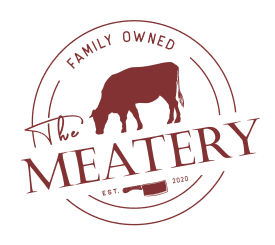The story of American Wagyu begins in 1976 when the first Japanese Wagyu cattle were imported to the United States. These initial imports consisted primarily of Black Wagyu (Kuroge Washu) and Red Wagyu (Akaushi) breeds. The term "Wagyu" literally translates to "Japanese cow," and these cattle were originally bred in Japan for their exceptional meat quality and intense marbling.
American ranchers recognized the potential of these Japanese breeds and began crossbreeding them with traditional American cattle breeds, particularly Angus. This strategic breeding program aimed to combine the legendary marbling characteristics of Japanese Wagyu with the size and productivity of American cattle. The result was the creation of what we now know as American Wagyu.
During the 1990s, the American Wagyu industry experienced significant growth as more ranchers adopted these genetics into their herds. The American Wagyu Association was established in 1990 to maintain breed integrity and provide certification standards. Unlike Japanese Wagyu, which maintains strict purebred lineages, American Wagyu typically contains varying percentages of Wagyu genetics, usually ranging from 50% to full-blood (100% Wagyu).
Today, American Wagyu represents a distinct category in premium beef production, offering consumers a unique combination of Japanese meat quality characteristics with American beef production efficiency. The industry continues to evolve, with some producers focusing on maintaining pure Wagyu bloodlines while others develop specialized crossbreeding programs to create beef that appeals to American palates and production systems.
Is there a fake Wagyu?
The issue of fake Wagyu has become increasingly prevalent in the global meat market. Unfortunately, some restaurants and retailers mislabel conventional beef as Wagyu to command premium prices. True American Wagyu must have verifiable Wagyu genetics and proper certification from recognized organizations like the American Wagyu Association.
Common forms of misrepresentation include:
- Selling regular beef with heavy marbling as Wagyu
- Claiming low-percentage Wagyu crosses as full-blood Wagyu
- Using terms like "Wagyu-style" or "Wagyu-inspired" to mislead consumers
- Failing to disclose the actual percentage of Wagyu genetics in crossbred cattle
To identify authentic American Wagyu, consumers should look for:
- Certification documentation from recognized breeding associations
- Clear disclosure of Wagyu percentage in the beef
- Reputable suppliers with traceable sourcing
- Proper marbling patterns characteristic of Wagyu genetics
The best defense against fake Wagyu is education and purchasing from verified sources. Legitimate American Wagyu producers take pride in their product's authenticity and will readily provide documentation of their cattle's genetic background.
Is Australian or American Wagyu better?
The comparison between Australian and American Wagyu is complex and often debated among beef connoisseurs. Both countries produce high-quality Wagyu, but there are notable differences in their production methods and end products.
Australian Wagyu typically features:
- More consistent grading standards similar to Japanese methods
- Greater focus on full-blood Wagyu production
- Longer feeding periods (often 400+ days)
- More regulated breeding programs
American Wagyu characteristics include:
- More emphasis on cross-breeding with Angus cattle
- Generally larger cut sizes
- More varied feeding programs
- Different flavor profiles that often appeal to American palates
Neither is definitively "better" as both offer unique qualities. Australian Wagyu often produces more consistent marbling patterns, while American Wagyu frequently offers a robust beef flavor that many consumers prefer. The choice ultimately depends on individual taste preferences and intended culinary applications.
Wagyu Grading And Marbling
American Wagyu uses a unique grading system that differs from both traditional USDA grades and Japanese Wagyu standards. The American Wagyu Association (AWA) has developed a specific grading system that accounts for the distinctive characteristics of American Wagyu beef.
The primary grading factors include:
- Marbling score (intramuscular fat content)
- Color and texture of meat
- Firmness and quality of fat
- Overall meat quality characteristics
Marbling grades typically fall into these categories:
- Prime Plus (highest level of marbling)
- Prime
- Choice Plus
- Choice
Most American Wagyu beef grades higher than conventional USDA Prime, with marbling scores that can range from BMS 6 to BMS 12 on the Japanese scale. However, the marbling patterns often differ from Japanese Wagyu, showing larger, more distinct veins of fat throughout the meat.
Is American Wagyu grass-fed?
American Wagyu cattle typically follow a combined feeding program that includes both grass and grain phases. Most producers begin with grass feeding during the early growth stages, followed by a grain-finishing period to develop the characteristic marbling.
Common feeding practices include:
- Initial grass-fed period (usually 12-18 months)
- Transition to grain-based finishing diet
- Custom feed formulations specific to each producer
- Various grain types including corn, barley, and wheat
While some producers offer exclusively grass-fed American Wagyu, this is less common because the intense marbling characteristic of Wagyu beef typically requires grain finishing. The length and composition of the feeding program can significantly impact the final product's taste, texture, and marbling development.
Nutritional Differences
American Wagyu beef offers distinct nutritional characteristics compared to conventional beef. The most notable difference lies in its fat composition and distribution. Research has shown that Wagyu beef contains higher levels of beneficial fatty acids and unique nutritional properties.
Key nutritional aspects include:
- Higher concentrations of monounsaturated fats
- Greater omega-3 to omega-6 fatty acid ratio
- Increased levels of conjugated linoleic acid (CLA)
- Higher content of essential minerals
Compared to conventional beef, American Wagyu typically contains:
- More intramuscular fat (marbling)
- Lower cholesterol levels per gram of fat
- Higher levels of beneficial fatty acids
- Different protein-to-fat ratios
While American Wagyu is still a calorie-dense food, its unique fat composition may offer certain health benefits when consumed as part of a balanced diet. The higher percentage of monounsaturated fats, particularly oleic acid, is similar to what's found in olive oil, which is associated with various health benefits.









